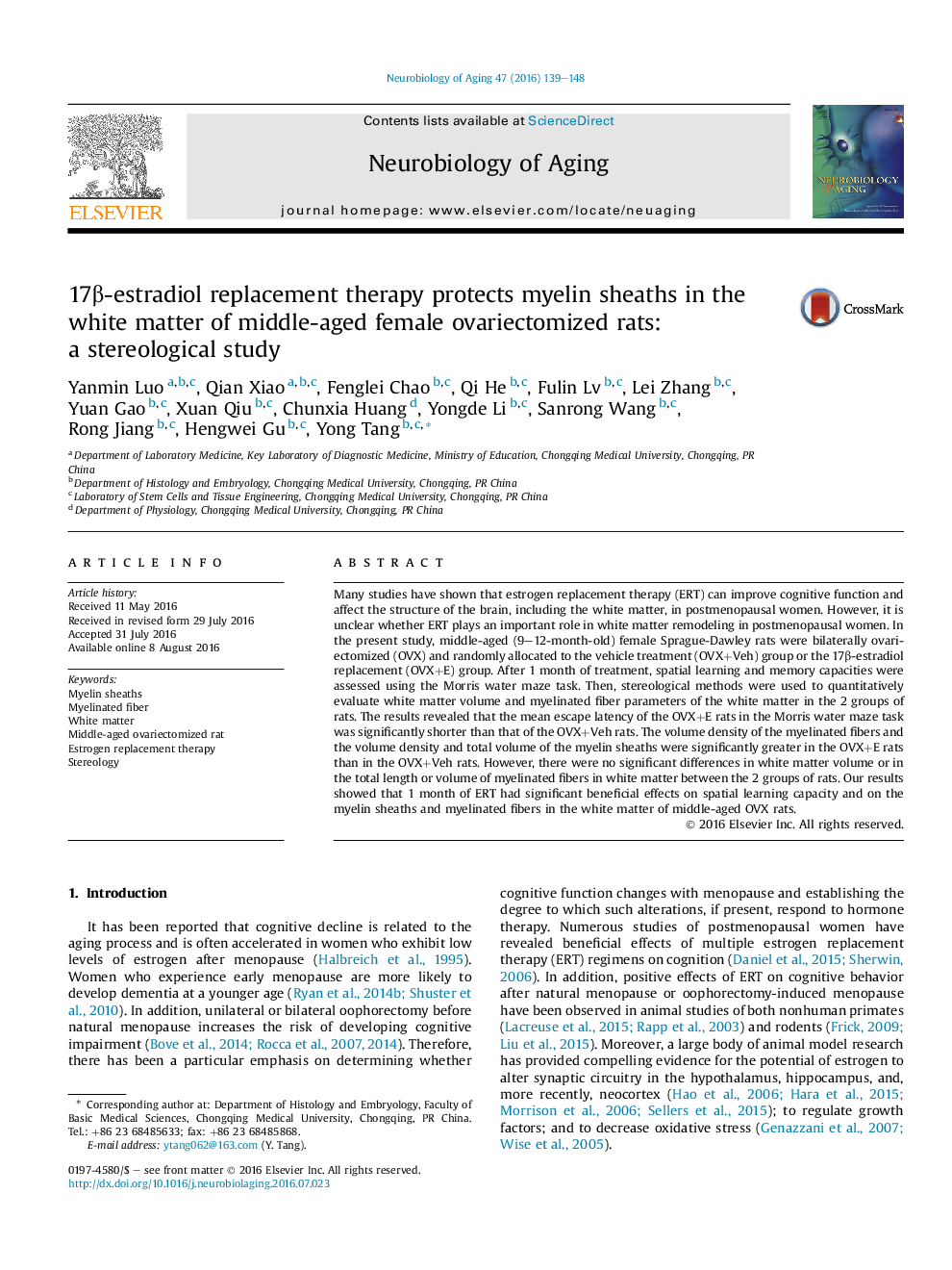| Article ID | Journal | Published Year | Pages | File Type |
|---|---|---|---|---|
| 6803263 | Neurobiology of Aging | 2016 | 10 Pages |
Abstract
Many studies have shown that estrogen replacement therapy (ERT) can improve cognitive function and affect the structure of the brain, including the white matter, in postmenopausal women. However, it is unclear whether ERT plays an important role in white matter remodeling in postmenopausal women. In the present study, middle-aged (9-12-month-old) female Sprague-Dawley rats were bilaterally ovariectomized (OVX) and randomly allocated to the vehicle treatment (OVX+Veh) group or the 17β-estradiol replacement (OVX+E) group. After 1 month of treatment, spatial learning and memory capacities were assessed using the Morris water maze task. Then, stereological methods were used to quantitatively evaluate white matter volume and myelinated fiber parameters of the white matter in the 2 groups of rats. The results revealed that the mean escape latency of the OVX+E rats in the Morris water maze task was significantly shorter than that of the OVX+Veh rats. The volume density of the myelinated fibers and the volume density and total volume of the myelin sheaths were significantly greater in the OVX+E rats than in the OVX+Veh rats. However, there were no significant differences in white matter volume or in the total length or volume of myelinated fibers in white matter between the 2 groups of rats. Our results showed that 1 month of ERT had significant beneficial effects on spatial learning capacity and on the myelin sheaths and myelinated fibers in the white matter of middle-aged OVX rats.
Related Topics
Life Sciences
Biochemistry, Genetics and Molecular Biology
Ageing
Authors
Yanmin Luo, Qian Xiao, Fenglei Chao, Qi He, Fulin Lv, Lei Zhang, Yuan Gao, Xuan Qiu, Chunxia Huang, Yongde Li, Sanrong Wang, Rong Jiang, Hengwei Gu, Yong Tang,
